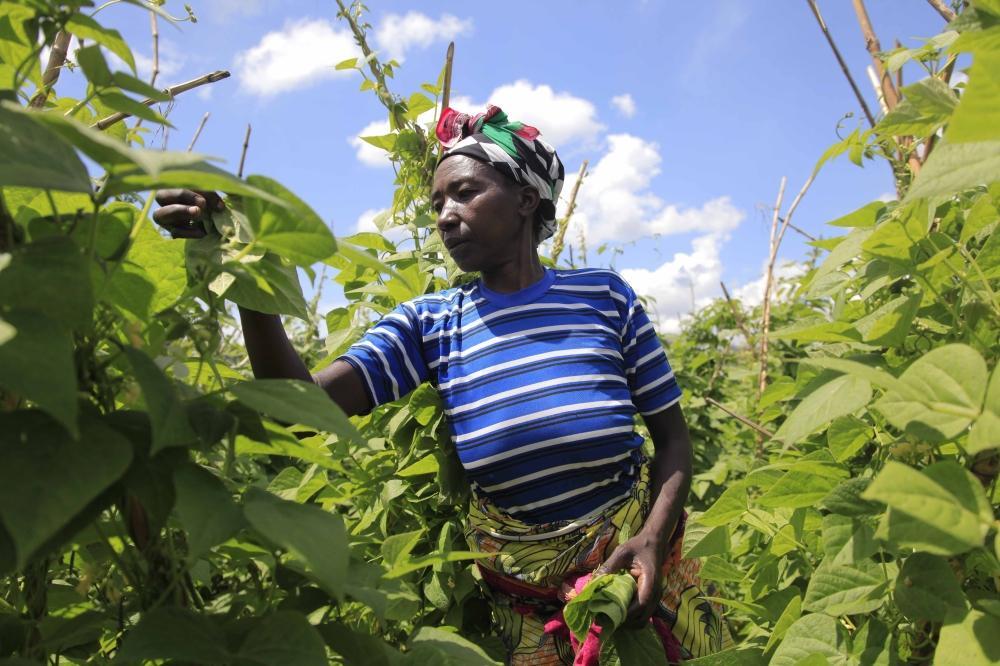Africa-Press – Rwanda. Rwanda relies heavily on agriculture to feed and employ its population. The sector employs at least 62 per cent of the workforce and accounts for close to 30 per cent of the gross domestic product (GDP).
While agriculture is predominantly subsistence-based, Rwanda is also known for key export commodities such as tea and coffee. Millions of farmers plan their activities around the country’s agricultural seasons, which dictate when and what to plant.
There are three main cropping seasons – A, B, and C – used by farmers, policymakers, and agricultural experts to guide production strategies and evaluate performance.
These seasons provide essential data on land use, crop area, yield, and production, which informs decisions by the Ministry of Agriculture and institutions such as the National Institute of Statistics of Rwanda (NISR).
For local farmers, the seasons define the rhythm of agricultural life.
“Season A is known as Urugaryi, Season B is Itumba, and Season C is Impeshyi,” explains Straton Dusengimana, a farmer with over 22 years of experience working in the Gashora marshland in Bugesera District.
Dusengimana is currently cultivating during Season C, which runs from June to August.
“In marshlands, we farm all year except in Season B, when heavy rains flood the fields. Even then, we grow certain crops like watermelons by adapting to the climate,” he explains.
On his five hectares, three in Mareba and two in Ngeruka sectors, he is now preparing for Season A, which starts in September and concludes in December, with harvests due in January.
Changing patterns
Across Eastern Rwanda, many farmers are now busy preparing their fields, getting ready to buy fertilizers, and planning crop rotations based on seasonal patterns.
Epiphanie Umurerwa, a 52-year-old maize and beans farmer from Mugesera Sector in Ngoma District, says her planting choices are dictated by weather trends.
“Right now, I am making manure and will buy fertilizers to prepare for Season A. I will plant maize in September and harvest in January,” she says.
With over 15 years in farming, she reflects on how climate has changed over time.
“It used to be predictable. Urugaryi would run from February to March, followed by Itumba in April to May, and Impeshyi in June and July before Umuhindo began in September,” she recalls.
That pattern, she observes, is no longer stable.
In the last season, she harvested over five tonnes of maize, a success she attributes to favorable weather conditions. “Rainfall or wind can make or break the season,” she remarks.
Vestine Uwicyeza, a bean farmer from Mukarange Sector in Kayonza, also underscores the importance of aligning with seasonal cycles.
“I’m not very familiar with the technical terms of the seasons, but I know I will plant maize in September and hope to harvest at least one tonne,” she notes.
Govt planning
The government plays a central role in aligning agricultural activities with seasonal cycles. According to ministerial guidelines released in July 2025, the 2026A and 2026B agricultural seasons will run from July 1, 2025, to June 30, 2026.
Priority crops for these seasons include maize, beans, wheat, soybeans, rice, Irish potatoes, cassava, bananas, vegetables, and fruits, all strategically selected to maximize yield and food security.
Jean Claude Izamuhaye, Head of Crop Research and Technology Transfer at the Rwanda Agriculture and Animal Resources Development Board (RAB), says the seasons are fundamentally driven by rainfall patterns.
“Rwanda has a bimodal rainfall system, which supports two main cultivation seasons namely A, B and a third season, C, in marshlands and irrigated zones,” he explains.
Season A (Umuhindo) runs from September to January and focuses on maize, beans, cassava, Irish potatoes, soybeans, vegetables, and wheat. Season B spans from March to May (or even early February in some areas) and includes similar crops.
Season C (Icyi) occurs from June to August and is ideal for beans, soybeans, Irish potatoes, and vegetables primarily in lowland, humid, or irrigated regions.
Season-specific input use is also telling. According to 2024 data, 39.7 per cent of farmers used improved seeds in Season A, compared to 18 per cent in Season B and 18.8 per cent in Season C.
Organic fertiliser use peaked at 89.1 per cent in Season A, dropping to 78.8 per cent in Season C. The use of inorganic fertilizers and pesticides also varied by season, reflecting both accessibility and crop-specific needs.
Currently, the Rwanda Meteorology Agency forecasts a typical dry Season C from June to August, with expected rainfall between 15mm and 150mm and temperatures ranging from 8°C to 30°C depending on region.
The Agency advises farmers and stakeholders to use this forecast in planning to reduce risks linked to shifting weather patterns.
However, in various regions of Rwanda, the application of these seasonal patterns varies. In the North, Musanze District enjoys year-round rainfall suitable for dry beans, potatoes, and fruits.
The Western Province favors tea, coffee, and root crops. The Eastern Province specialises in cereals and pulses, while the Southern Province focuses on Irish potatoes and maize.
For More News And Analysis About Rwanda Follow Africa-Press






